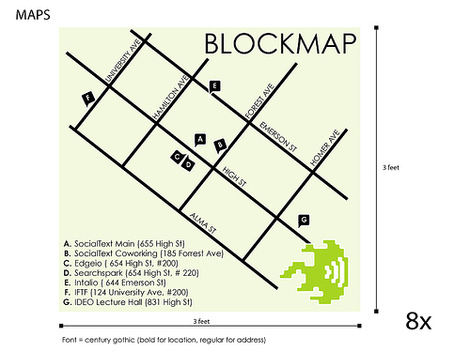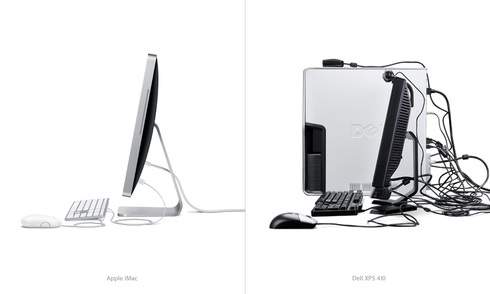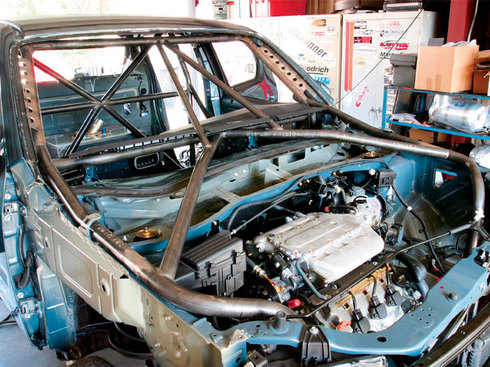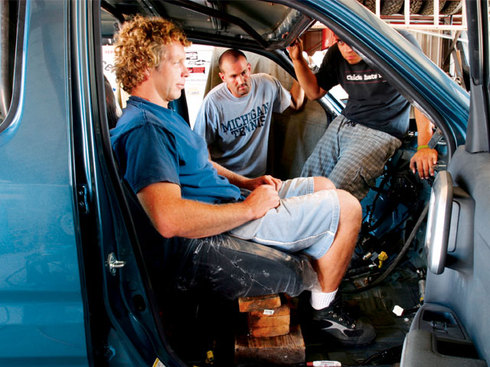An extra heaping serving of power-on oversteer, anyone?
This video is a hot lap of Laguna Seca as seen by driver Michael Sheehan behind the wheel of a gnarly — gnarly! — 1968 McLaren M6B Can-Am racing car. To be precise, this doesn’t seem much like driving a normal car to me; it seems to have much more in common with being strapped to the tip of an ICBM. Here’s what lighting the wick on a M6B feels like, in the words of Sheehan:
This was the car driven by ex-Formula 1 driver (and race winner) Jo
Bonnier. The car has in the neighborhood of 600hp and weighs in around
1,700lbs. It’s an aluminum monocoque, which is very different from
modern racecars. Think of it as sheet aluminum origami secured with
rivets. The only "safety cage" to speak of is a not very confidence
inspiring main hoop, braced only with a stringer from the center top of
the hoop back to the head on the engine, which is secured with
removable pins.
Let me honest by saying that I currently feel like someone has beaten
the crap out of me with a baseball bat. My lats, shoulders, pecs and
upper arms are sore from wrestling with the car. I have a
bruise/abrasion the size of a Coke can on my right buttock from sitting
directly on the aluminum floor. Don’t ask me how, I still don’t know.
Oh, and despite the earplugs, my ears are still ringing. All in all, I
couldn’t be happier and I wouldn’t change a thing. Every muscle ache
brings a happy memory back from yesterday.
Aside from being remarkably gnarly, the McLaren M6B is the tangible expression of a wildly successful innovation program called the Canadian-American Challenge Cup, or Can-Am. Can-Am was a racing series which attracted the very best engineers and drivers. What made it unique was its lack of rules. The only real constraints facing the teams particpating in Can-Am were time, money, and the physical layout of the tracks to be raced on. When it came to what you wanted to race, the sky was the limit — and it engendered some incredible designs, including the some very advanced aerodynamic and structural solutions. And horsepower came oozing out of every nook and crevice, leading up to the amazing Penske Porsche 917, whose dominance effectively killed the series, because it "cracked" the code — no further innovation was possible given period technology, no matter one’s budget.
What’s the lesson for creating innovative behavior? It’s that macro conditions matter the most when your goal is to push the state of the art. Setting macro context is more important than mapping out a golden strategy at the micro level. If you want to produce astoundingly innovative solutions in a revolutionary sense, perhaps the best thing you is to set a few very broad boundary conditions, such as time and money, and then let everyone go do their thing. In this way, Can-Am was very much an early type of automotive X PRIZE, if one which pursued a very different performance vector. Just as in an X PRIZE competition, the governing body behind Can-Am declared set amounts of prize money, told people where and when to come and do performance tests, and then watched lots of adult human beings spend lots of blood, sweat, tears, and cash in the pursuit of victory. Can-Am was the ultimate in high-variance automotive innovation, and at the right end of the Gaussian distribution of car designs came things like the M6B. And they were awesome.
For the serious UGG types among you, here’s a twenty-five minute video of Sheehan driving a race around Laguna Seca:
The annual Monterey Historic Races are on August 17-19, and the West Coast staff of metacool will there in force. The races are not just a great chance to see historic pieces of machinery such as the M6B in action, but are a wonderful way to appreciate the ingenuity, courage, and sheer beauty involved in this human endeavor we call design.





